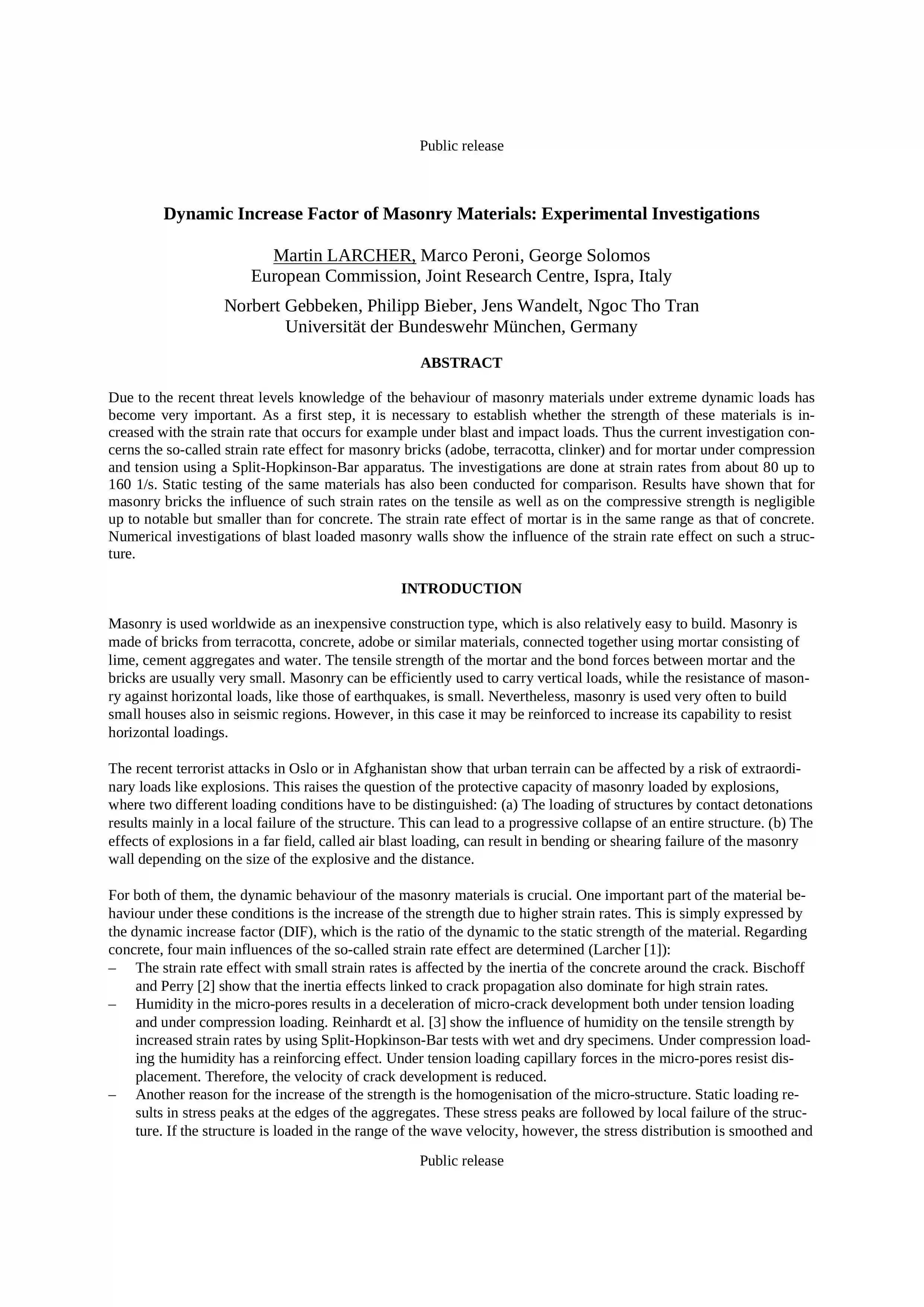
Scientific article
Material Properties
2013
- Abstract
- Masonry is used worldwide as an efficient and convenient building system. Masonry is made using bricks from terracotta, concrete, adobe or similar materials connected together by using mortar. Due to the recent threat levels knowledge of the behaviour of masonry materials under extreme dynamic loads has become very important. As a first step, it is necessary to establish whether the strength of these materials is increased with the strain rate that occurs for example under blast and impact loads. Thus the current investigation concerns the so-called strain rate effect for masonry bricks (adobe, terracotta, clinker) and for mortar under compression and tension using a Split-Hopkinson-Bar apparatus. The investigations are done at strain rates from about 80 up to 160 1/s. Static testing of the same materials has also been conducted for comparison. Results have shown that for masonry bricks the influ-ence of such strain rates on the tensile as well as on the compressive strength is negligible up to notable but smaller than for concrete. The strain rate effect of mortar is in the same range as that of concrete. Numerical investigations of blast loaded masonry walls will show the influence of the strain rate effect on such a structure.
- Authors
- LARCHER Martin; PERONI Marco; SOLOMOS George; GEBBEKEN Norbert; BIEBER Philipp; WANDELT Jens; TRAN Ngoc Tho
- Year
- 2013
- Publisher
- Federal Office of Bundeswehr Infrastructure, Environmental Protection and Services
- Citation
Larcher M, Peroni M, Solomos G, Gebbeken N, Bieber P, Wandelt J, Tran N. Dynamic Increase Factor of Masonry Materials: Experimental Investigations. In Conference Proceedings: 15th International Symposium on Interaction of the Effects of Munitions with Structures (ISIEMS). Bonn (Germany): Federal Office of Bundeswehr Infrastructure, Environmental Protection and Services; 2013. JRC83527 - Identifiers
JRC JRC83527
Documents are published in the JRC Publications Repository and are protected by copyright,with all rights reserved, unless otherwise indicated.
Additional information:https://ec.europa.eu/info/legal-notice_en#copyright-notice
Additional information:https://ec.europa.eu/info/legal-notice_en#copyright-notice
